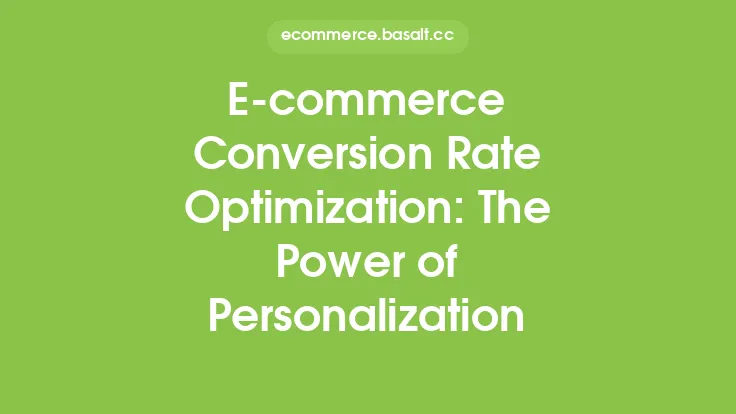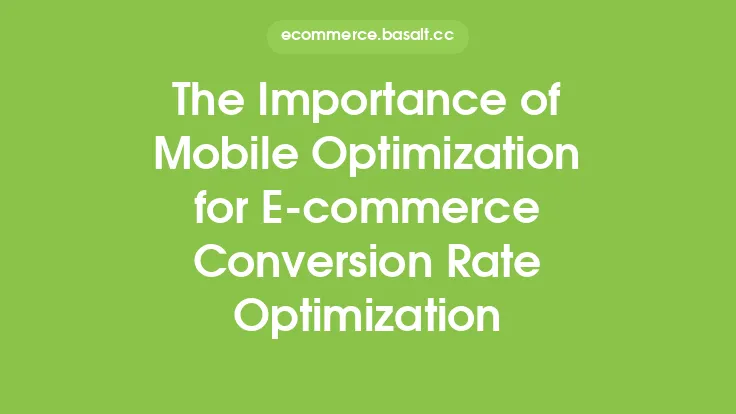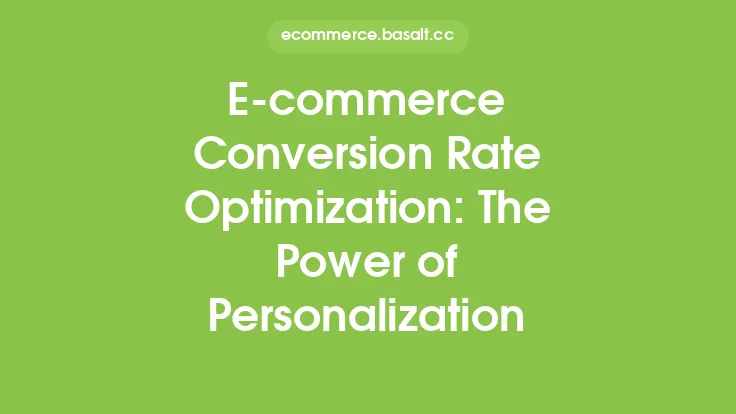When it comes to e-commerce conversion rate optimization, there are numerous strategies that businesses can employ to increase sales and revenue. One of the most effective and often overlooked tactics is the use of social proof. Social proof refers to the psychological phenomenon where people are more likely to adopt a behavior or make a purchase if they see others doing it. In the context of e-commerce, social proof can be used to build trust, credibility, and confidence with potential customers, ultimately driving conversions and sales.
What is Social Proof?
Social proof is a powerful marketing tool that leverages the influence of social interactions to drive consumer behavior. It is based on the idea that people are more likely to trust and follow the actions of others, especially if they are similar to themselves. In e-commerce, social proof can take many forms, including customer reviews, ratings, testimonials, social media endorsements, and user-generated content. By showcasing social proof on their website, e-commerce businesses can create a sense of community and social validation, which can help to alleviate doubts and concerns that potential customers may have about making a purchase.
Types of Social Proof
There are several types of social proof that e-commerce businesses can use to optimize their conversion rates. These include:
- Customer reviews and ratings: Customer reviews and ratings are one of the most effective forms of social proof. They provide potential customers with an honest and unbiased assessment of a product or service, which can help to build trust and credibility.
- Testimonials: Testimonials are similar to customer reviews, but they are typically more in-depth and personal. They can be used to showcase the experiences and successes of satisfied customers, which can help to build confidence and trust with potential customers.
- Social media endorsements: Social media endorsements refer to the practice of partnering with social media influencers or celebrities to promote a product or service. This can be an effective way to reach a large and targeted audience, and can help to build credibility and trust with potential customers.
- User-generated content: User-generated content refers to any content that is created and shared by customers, such as photos, videos, or blog posts. This can be a powerful form of social proof, as it provides potential customers with an authentic and unbiased view of a product or service.
How to Use Social Proof to Optimize Conversion Rates
There are several ways that e-commerce businesses can use social proof to optimize their conversion rates. These include:
- Displaying customer reviews and ratings prominently on product pages: Customer reviews and ratings are most effective when they are displayed prominently on product pages. This can help to build trust and credibility with potential customers, and can increase the likelihood of a sale.
- Using testimonials and user-generated content in marketing campaigns: Testimonials and user-generated content can be used in marketing campaigns to build credibility and trust with potential customers. This can include email marketing campaigns, social media campaigns, and paid advertising campaigns.
- Partnering with social media influencers: Partnering with social media influencers can be an effective way to reach a large and targeted audience, and can help to build credibility and trust with potential customers.
- Creating a sense of community: Creating a sense of community on an e-commerce website can help to build trust and credibility with potential customers. This can include features such as discussion forums, social media groups, and user-generated content.
Best Practices for Using Social Proof
There are several best practices that e-commerce businesses should follow when using social proof to optimize their conversion rates. These include:
- Being authentic and transparent: Authenticity and transparency are key when it comes to social proof. E-commerce businesses should never fake or manipulate customer reviews or testimonials, as this can damage trust and credibility with potential customers.
- Using high-quality images and videos: High-quality images and videos can help to make social proof more engaging and effective. This can include photos of satisfied customers, videos of products in use, and other visual content.
- Making social proof prominent: Social proof should be made prominent on an e-commerce website, including on product pages, in marketing campaigns, and on social media.
- Encouraging user-generated content: Encouraging user-generated content can help to create a sense of community and social validation, which can drive conversions and sales.
Measuring the Effectiveness of Social Proof
Measuring the effectiveness of social proof is crucial to understanding its impact on conversion rates. There are several metrics that e-commerce businesses can use to measure the effectiveness of social proof, including:
- Conversion rates: Conversion rates are the most obvious metric for measuring the effectiveness of social proof. By tracking conversion rates before and after the implementation of social proof, e-commerce businesses can determine its impact on sales and revenue.
- Customer engagement: Customer engagement metrics, such as time on site, pages per session, and bounce rate, can provide insight into how social proof is affecting customer behavior.
- Customer satisfaction: Customer satisfaction metrics, such as customer surveys and feedback forms, can provide insight into how social proof is affecting customer satisfaction and loyalty.
- Return on investment (ROI): ROI is a key metric for measuring the effectiveness of social proof. By tracking the revenue generated by social proof and comparing it to the cost of implementation, e-commerce businesses can determine its ROI and make informed decisions about future investments.
Common Mistakes to Avoid
There are several common mistakes that e-commerce businesses should avoid when using social proof to optimize their conversion rates. These include:
- Faking or manipulating customer reviews: Faking or manipulating customer reviews can damage trust and credibility with potential customers, and can ultimately harm conversion rates and sales.
- Not making social proof prominent: Not making social proof prominent on an e-commerce website can reduce its effectiveness and impact on conversion rates.
- Not encouraging user-generated content: Not encouraging user-generated content can reduce the sense of community and social validation, which can drive conversions and sales.
- Not measuring the effectiveness of social proof: Not measuring the effectiveness of social proof can make it difficult to understand its impact on conversion rates and make informed decisions about future investments.
Conclusion
Social proof is a powerful marketing tool that can be used to optimize e-commerce conversion rates. By leveraging the influence of social interactions, e-commerce businesses can build trust, credibility, and confidence with potential customers, ultimately driving conversions and sales. By understanding the different types of social proof, how to use social proof to optimize conversion rates, and best practices for using social proof, e-commerce businesses can create effective social proof strategies that drive results. Additionally, by measuring the effectiveness of social proof and avoiding common mistakes, e-commerce businesses can ensure that their social proof strategies are effective and impactful.





